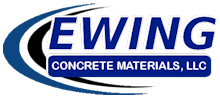Concrete Tips
Education is the best defense against common concrete issues. A little advance planning, along with educated maintenance will aid in extending the useful life of the concrete.
Concrete Care And Maintenance
You have the right to expect your exterior concrete to serve you well for many years. It will, if you practice these tips in caring for your concrete driveways, sidewalks, patios and garage floors.
DO NOT use deicers on any concrete surface during its first year of service. Please use plain, clean sand whenever increased skid resistance or traction is needed.
NEVER use deicers containing ammonium sulfate or ammonium nitrate. They will rapidly disintegrate concrete, causing surface scaling. Lawn and garden fertilizers may also contain ammonium sulfate or ammonium nitrate. Always sweep fertilizer from concrete surfaces before washing thoroughly.
Street snow removal efforts often incorporate the use of deicers containing salts. Snow clinging to the underside of vehicles and snow plowed onto driveways may contain deicers. Care should be taken to remove these deicers to avoid damage to your concrete surfaces. It is best to keep concrete clear of snow and deicers whenever possible.
Crazing
The development of fine random cracking limited to the surface of the concrete.
Causes
Poor or inadequate curing – may be the result of environmental conditions such as low humidity, extremes in ambient temperature, direct
sunlight, and drying winds
Settling of course aggregate making the surface film containing a greater amount of cement and fines than in the body of the concrete
Excessive wetting and drying at an early stage of curing
Prevention
DO NOT spray the top of the concrete while finishing
DO NOT finish the concrete before it has completed bleeding
DO NOT dust any cement onto the surface to absorb bleed water
DO NOT sprinkle surface with water while finishing
Have the curing process start as soon as possible by following recommended practices and timing
Use moderate slump
Avoid excessively working the surface to prevent an increase in the water-cement ratio at the surface
If high evaporation rates are anticipated, lightly dampen the subgrade prior to placement of the concrete
Curling
The distortion of a slab from either upward or downward bending of the edges resulting in a curved shape.
Causes
When the top and the bottom of the slab have disproportionate rates of curing; rapid surface drying, temperature differential
between the top and the bottom of the slab
Increased by thin slabs and long joint spacing
Prevention
Use a mix with the lowest practical water/cement ratio
Use largest practical aggregate and/or highest practical coarse aggregate
Avoid higher than necessary cement content
Take precautions to avoid excessive bleeding
Avoid polyethylene vapor retarders unless covered with appropriate granular fill
Cure thoroughly, including joints and edges. When membrane curing compounds are used, apply twice the recommended rate
in two applications at right angles to each other
When minimizing curling is critical, use a joint spacing not to exceed 24 time the thickness of the slab
Use properly designed and placed slab reinforcements
Dusting
The formation of a powder substance on the surface of a hardened slab of concrete.
Causes
Premature finishing operations
Condensation from temperature of the material rising slower than the surrounding air
Carbonation as a result of inadequate ventilation in enclosed spaces
Cement paste hydration process stopped from insufficient moisture, dry curing
Prevention
Use moderate slump concrete not exceeding 5 inches
NEVER sprinkle or trowel dry cement into the surface of plastic concrete to absorb bleed water.
DO NOT perform finishing operations with water present on the surface or while the concrete continues to bleed.
DO NOT add water to the surface to facilitate finishing operations
DO NOT place concrete directly on polyethylene vapor retarders or non-absorptive subgrades
Ensure there is adequate ventilation of exhaust gases in enclosed spaces
Use sufficient curing measures to retain moisture in concrete for the first 3 to 7 days and protect it from the environment particularly in freezing conditions

